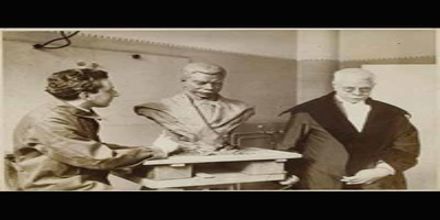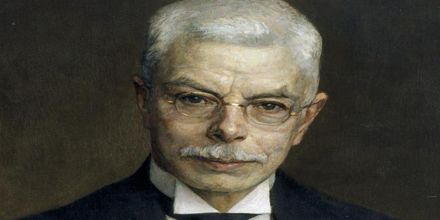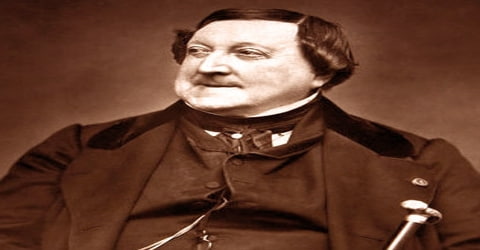Born: 25 May 1865; Zonnemaire, Netherlands
Died: 9 October 1943 (aged 78); Amsterdam, Netherlands
Special Fields: Physics
Known for: Zeeman effect
Notable awards: Nobel Prize for Physics (1902)
Matteucci Medal (1912)
Henry Draper Medal (1921)
ForMemRS (1921)
Rumford Medal (1922)
Franklin Medal (1925)
Pieter Zeeman was a Dutch physicist who won Nobel Prize in Physics for his discovery of the Zeeman Effect. He is one of the most well-known physicists who successfully conducted research on spectral lines that led to the discovery of what is known as Zeeman Effect. Zeeman grew up in a small village in an island in the Netherlands but that did not hinder his interest in the sciences from an early age and in fact he had submitted a scientific illustration for the phenomenon of Aurora Borealis to a magazine when he was still in school. Zeeman studied and taught at the University of Leiden and later on he went on to become a professor at the University of Amsterdam
Work
During the 19th century important connections between electricity, magnetism and light were clarified by Hendrik Lorentz. It also became apparent that different substances emit and absorb light having certain fixed wavelengths. Every substance has a characteristic spectrum of lines. In 1896 Pieter Zeeman studied how light was affected by magnetic fields. It turned out that under the influence of a magnetic field, the lines in a spectrum split up into several lines. The phenomenon could be explained by the electron theory formulated by Pieter Zeeman’s mentor, Hendrik Lorentz.

Einstein visiting Pieter Zeeman in Amsterdam
Zeeman was Honorary Doctor of the Universities of Göttingen, Oxford, Philadelphia, Strasbourg, Liège, Ghent, Glasgow, Brussels and Paris. He was also a member or honorary member of numerous learned academies, including the very rare distinction of Associé Etranger of the Académie des Sciences of Paris. He was also member and Chairman of the Commission Internationale des Poids et Mesures, Paris. Appointed member of the Royal Academy of Sciences of Amsterdam in 1898, he served as the Secretary of the Mathematical-Physical Section from 1912 to 1920. Among the other distinctions may be mentioned the Rumford Medal of the Royal Society of London, the Prix Wilde of the Academie des Sciences of Paris, the Baumgartner-Preis of the Akademie der Wissenschaften of Vienna, the Matteucci Medal of the Italian Society of Sciences, the Franklin Medal of the Franklin Institute of Philadelphia, the Henry Draper Medal of the National Academy of Sciences of Washington. He was also made a Knight of the Order of Orange-Nassau and Commander of the Order of the Netherlands Lion.
Childhood & Early Life
Pieter Zeeman was born to Catharinus Forandinus Zeeman and Wilhelmina Zeeman on 25, May, 1865 in a tiny village located in Schouwen-Duiveland in Netherlands. Zeeman’s father was a clergyman in the village.
Pieter Zeeman was educated at his local school in Zierikzee and displayed a deep interest in the sciences from an early age. In 1883, he created an illustration of Aurora Borealis that took place that year and the illustration was published by the British scientific journal ‘Nature’.
After passing high school at the age of 18 in 1883, he was sent to Delft in order to learn the classical languages and he had to learn those languages since it was a compulsory requirement for anyone willing to go to university. After completing his training in the classical languages, Zeeman enrolled at the University of Leiden in 1885. He was taught physics by such luminaries of the time as Hendrik Lorentz and before long he worked as Lorentz’s assistant at the university.
It was in the year 1893 that Pieter Zeeman presented his doctoral thesis at the University of Leiden and the subject was Kerr effect. He was awarded his doctorate and spent some time at Friedrich Kohlrausch Institute located in Strasbourg but he returned to take up the position of a Privatdozent or senior research and teacher at the University of Leiden.
Career
Pieter Zeeman’ time at the University of Leiden as a Privatdozent took an unexpected turn in the year 1896 when he was fired from the university by his supervisor when he conducted experiments in the laboratory in relation to spectral lines in a direct violation of orders. The research on spectral lines would go on to become the bedrock of his career as a scientist.
Zeeman continued his research on spectral lines. He worked diligently on his research in 1896 and in the same year his findings at Royal Netherlands Academy of Arts and Sciences was recognized by eminent scientists. His old mentor from University, Hendrik Lorentz took an interest in the findings and it soon became well known.
Following the acceptance of his theory on spectral lines, Pieter Zeeman was appointed as a lecturer of physics at the University of Amsterdam in the year 1897. He was promoted to the post of a professor 3 years later and it was in his fifth year at the University of Amsterdam that Zeeman shared the Nobel Prize in Physics with Hendrik Lorentz for the Zeeman Effect. It was in the year 1908 that Pieter Zeeman was made the Director of the Institute of Physics located in Amsterdam and in the process he succeeded another giant of the world of physics research in Van der Waals. He was involved in advanced research for the rest of his career and published papers on gravitation as well as Magneto-optics that dealt with the behavior of light in a moving medium.
Zeeman also served as the Secretary of the Mathematical-Physical Section at the Royal Academy of Sciences for 8 years starting from 1912. He became a member of the Academy 14 years prior to his appointment as the secretary.
Major Works
Pieter Zeeman is considered among the foremost physicists of his time and during his career he worked on a lot of concepts; however it was his work on spectral lines that came to be known as the ‘Zeeman Effect’ that is without doubt his greatest work. He shared the 1902 Nobel Prize in Physics for the discovery.
Awards & Achievements
- He was awarded the Nobel Prize in Physics in the year 1902 along with Hendrik Lorentz for his work on the Zeeman Effect.
- Zeeman was awarded the Matteucci Medal in 1912
- In 1921, Zeeman won the Henry Draper Medal.
- The Royal Society awarded Zeeman the Rumford Medal in 1922.
- The Franklin Institute awarded Zeeman the Franklin Medal in 1925.

Awards and honors
Zeeman received the following awards for his contributions.
- Nobel Prize for Physics (1902)
- Matteucci Medal (1912)
- Elected a Foreign Member of the Royal Society (ForMemRS) in 1921[1][2]
- Henry Draper Medal from the National Academy of Sciences (1921)[16]
- Rumford Medal (1922)
- Franklin Medal (1925)
The crater Zeeman on the Moon is named in his honour.
Personal life
Outside his field of study Zeeman showed much interest in literature and the stage. An entertaining host, he loved to invite his collaborators and pupils to dine with him at his home, an event preceded by a learned talk in his study and followed by a gathering in the family circle.
Zeeman married Johanna Elisabeth Lebret in 1895; they had one son and three daughters. During the last year of his professorship he suffered from ill-health. He died after a short illness on October 9, 1943.

Pieter Zeeman in Museum Boerhaave
Personal Life & Legacy
Pieter Zeeman died in Amsterdam at the age of 78 on 9 October, 1943.
















